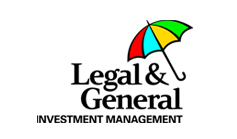
If the culture of an organisation is in the right place, it’ll feed positive energy into conversations about employee engagement and customer focus, as well as ensure there is openness around performance, risk and long-term strategy.
This was a central theme at Criticaleye’s most recent Asia Leadership Retreat, held in partnership with Accenture and Workday. It falls on the Board and senior leadership team to line up the culture they wish to create and be consistent around behaviours and values. Matthew Blagg, CEO of Criticaleye, said: “The reality is that you've got to spend more time together because if you're leaving the room and you’re not aligned, you've got a problem. I think great Boards and leadership teams go into the grey areas as they trust one another to have a difference of opinion. That openness should cascade down into the organisation.”
Gastón Carrión, Managing Director, Talent and Organisation Lead for Growth Markets at Accenture, described how leaders must be open and highly adaptable, especially in current market conditions where competitive advantage depends so heavily on talent. He said: “It goes back to what's the operating model of your organisation? What's the culture that you will develop? How do we create the right level of connections using technology?... At the end of the day, if you're going to have a [globally] distributed team, you need to have some infrastructure to be able to operate the right way.”
Focussing on the skills challenge that’s often cited by companies operating in APAC, Gastón called for a shift in mindset and approach so companies move from being “talent consumers” to “talent creators”. He explained: “People are leaving companies because they don't feel that they are using their full skill sets. They want to go to places where they can actually be at their full potential.”
Ravi Gopinath, Non-executive Director at precision instrument specialist Spectris and Indian engineering conglomerate, Thermax, discussed how Boards really need to be close to these discussions given how rapidly businesses are having to change. He asked: “What opportunities can technology throw up? Are there new business models? It could be services; it could be building an ecosystem. Is there an adjacency that the business could get into with [new] technology?
“It's about ensuring how companies and businesses can stay relevant in an increasingly distributed world, so you have to look at how that can help you create new business models.”
For Ravi, these kinds of questions absolutely come back to talent, skills and, ultimately, creating the right culture. He said: “There equally needs to be a question around: Does the organisation have the capability and the competency within to really absorb [new technology] and use it effectively?”
Risk Register
When polled on the major risks for businesses at present, attendees at the Retreat put leadership capability first, followed by the economy, technology, geopolitics and climate change. So, given this degree of complexity and volatility, what does a healthy approach to risk management look like?
Varsha Bipinchandra, Independent Board Member at Partner RE ASIA and FWD Takaful Malaysia, commented: “They say culture beats strategy, but I think culture beats risk management and governance as well. That starts with the tone at the top and that's what leadership is – we've got to have the right leadership for the company… An extension of that is the Board composition, which is so critical as well.”
It's vital to have technical know-how and a culture that reduces the chances of a Board getting blindsided. “Financial risk is the most important risk for financial services and therefore risk quantification,” said Varsha, who went on to add that “identifying and managing risk is critical as well”.
Ian Stone, Independent Non-executive Director at technology giant Tencent and a Board Mentor at Criticaleye, emphasised the importance of robust oversight and controls within an organisation. “The only way I know that something's happening on the front line is by internal audit. From the very beginning as a listed company, you need to invest in good people in the internal control and internal audit teams,” he said.
A major ongoing concern for many companies is how to adapt to the shifting alliances and points of friction between governments on the global stage, not least China and the US. Ian said: “A major risk currently is geopolitics, even though that's been around for some time. It's been continuing to develop despite the changes in the US Government. In the context of the US, Chinese companies with a lot of business in the US will be under scrutiny, not so much from the regulator; more a political aspect.”
Every high performing Board and leadership term with an international footprint will carve out time to examine different scenarios and what these mean for a business over the short, medium and long term. It’s something that can only happen with integrity if trust and accountability exists between the executive and independent directors.
“In terms of risk, the right culture can actually motivate achievement; it can drive entrepreneurial behaviour; it can allow you to harness talent from within and attract talent from outside,” commented Ravi. “It’s something that creates a really long-term sustainable place for growth for the business and the company.”
By Bridgette Hall, Senior Editor, Criticaleye

























